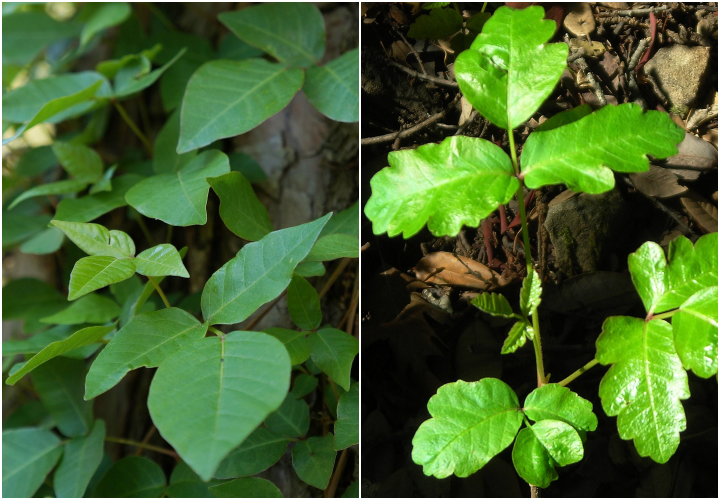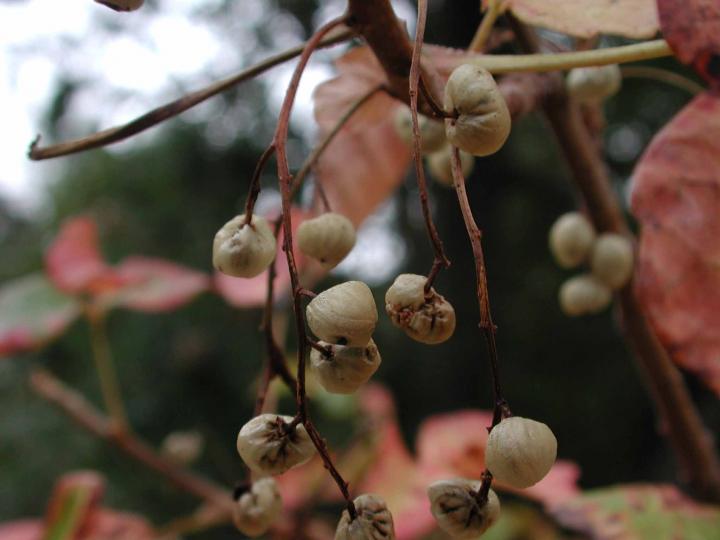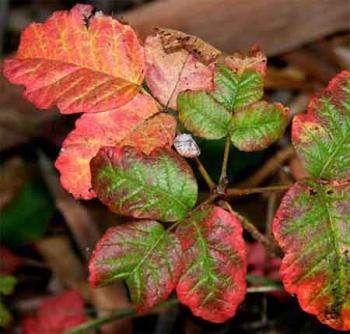
Poison oak can be a harmful plant if you touch it, as its urushiol oil will cause a nasty rash.
What's the Difference Between Poison Oak and Poison Ivy?
ADVERTISEMENT
When I was younger say, 19 I was living in the Pacific Northwest and between rides wouldnpick the local blackberries alongside the road and of course everyone said, ‘Don’t eat the ones right alongside the road go in a little. So not bothering to look and wearing shorts o proceeded to pick blackberries whilst wait for rides to work. About two weeks later I noticed a rash. Thinking it was from picking the blackberries I didn’t do anything and it itched sooo bad I finally talked to some locals who told me what it was as I had no clue being from the Midwest. I had it the whole summer and it was near my eye. It just kept on weeping and the oozing kept itching and spreading. It was horrible my first and only encounter as I moved back to the Midwest after that. Up until I had an anaphylactic reaction to a native wasp I had never been so itchy in my life. I just suffered so much with it and was told it can kill you. People have eaten it?! To combat the effects? Not something I would ever try.
As a former backcountry ranger in the Pacific Northwest, poison oak and I are intimately connected to each other. I’ve never found any holistic or OTC remedy to be of much effectiveness for the agonizing rash. After having it over 200 times I can definitively say, the only effective remedy is complete avoidance. If you do happen to get it and are near the coastal areas a brown algae called laminaria if rubbed directly on the rash area will give relief, tested repeatedly on myself and hundreds of backpackers! You’re never too old to play outside!
I can walk past poison oak or ivy and catch it! I'm that allergic to it. It usually takes several days to a week for it to show up and being from SWVA I'm constantly exposed to it. I do a good majority of the lawn work so I just have to deal with it a couple to three times a year. I almost always end up at the ER for shots and a prescription of steroids. Stoping off at the pharmacy for a box of Benadryl on the way home. I recommend Domboro Sulfur Solution for irritation or Technu spray works well also. If you are holistic and prefer natural solutions, wild Touch Me Not when crushed and applied to the affected areas. Even with treatment I have had poison hang on for over a month. Whatever works for you, good luck and don't scratch. :(
I live in the Sonoran Desert so I never gave poison oak or poison ivy a thought — until I ignorantly ran into poison ivy while bushwhacking to find a spring. I had no idea what was wrong with me the next day and when the doctor at urgent care told me, I was shocked! You can bet I watch out for leaves of three now, even in the desert! Thank you so much for the information- I screenshotted the photo so I can refer to it when in doubt! That stuff is awful!
I've always been told that poison oak is a western North America plant but you say there is an eastern variety. What does it look like and what is its range? Does it look very similar to the western variety and is it present on Long Island, NY?
Really? I grew up in Southern Ohio and there was poison ivy everywhere. Spent 40 years in New Mexico, and never saw it - likewise friends and relatives in various parts of Texas and up the entire West Coast. So I always thought it was an Eastern plague, although I see other commenters has encountered it in the West). Now I've relocated to Tennessee and to our sorrow, have found that the woods on our property have healthy growths of it. Frankly, I'm not sure whether we have poison ivy or poison oak, or both, the descriptions and pictures cover many plants that are twining up our trees. Clearing out a couple of fallen trees made for a lasting adventure involving urgent care.
On the bright side, poison ivy is one of the earliest blooming plants, coming out in late January around here. I've never seen the blooms myself, but my honey bees find them, and bring back bright red pollen. They need early blooming plants for pollen to feed the young larvae (who knew?) and there's no urushiol in the nectar or pollen. Also note, LOTS of plants have 3 leaf growth patterns - wild blackberries, for instance, which we also have in abundance. Once the stray blackberry shoots are a couple feet tall you can definitely tell the difference though.
I have been battling poison oak this past week. I finally ordered jewelweed salve from amazon and it worked so fast. I had scabby, pockmarked, quasi-modo cheeks and that salve worked right away. It is noticeably better after just a few hours and so much relief.
Our family had poison ivy growing around the base of trees in N. FL. When I took my young children to the local doctor with the rash, he recommended using All laundry detergent to wash off our clothes. It worked!
Many years ago I got poison oak symptoms while clearing brush from property in Northern California, I found a product I think it was called "Jack's Poison Oak Remedy", the main ingredient is "Phenol" the same as in Chloraseptic Spray ( for sore throats ). Since then "Jacks's" has been hard to find but Chloraseptic is readily available everywhere. What "Phenol" does is numb the nerve endings so you don't scratch the blisters which release the fluids and causes the spreading. It is not a cure but it relieves the itching. Washing the affected area with strong soap and gently drying with paper towels ( and throw them away ) helps. Once upon a time Fels Naphtha soap had "Naphtha" in it and it really worked and that would dry out the resins ( and your skin ) but that soap no longer has Naphtha in it. I do not recommend using any kind of product like Naphtha as it is toxic.
How do you get rid of poison oak or poison ivy?











